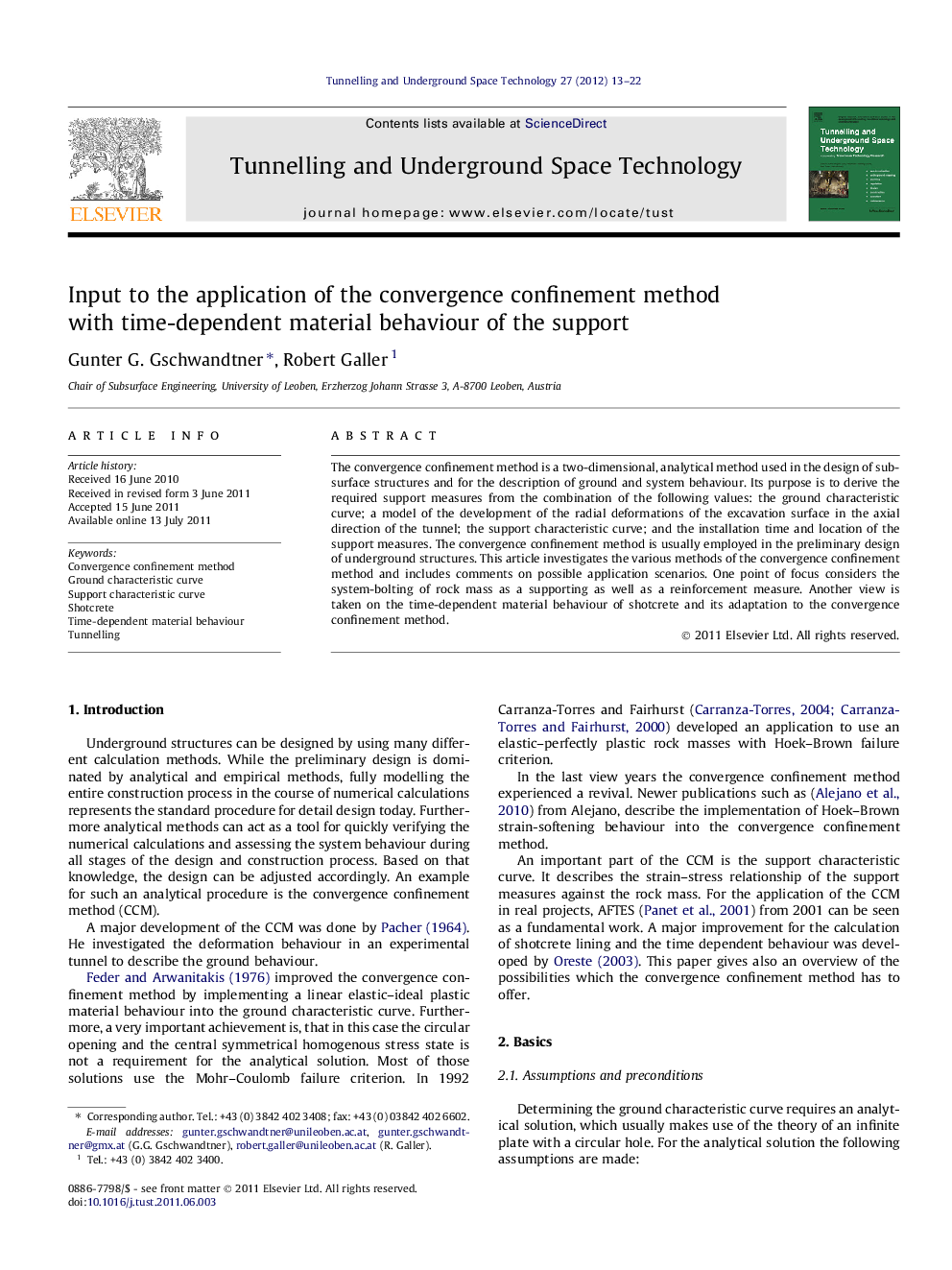| Article ID | Journal | Published Year | Pages | File Type |
|---|---|---|---|---|
| 312541 | Tunnelling and Underground Space Technology | 2012 | 10 Pages |
The convergence confinement method is a two-dimensional, analytical method used in the design of subsurface structures and for the description of ground and system behaviour. Its purpose is to derive the required support measures from the combination of the following values: the ground characteristic curve; a model of the development of the radial deformations of the excavation surface in the axial direction of the tunnel; the support characteristic curve; and the installation time and location of the support measures. The convergence confinement method is usually employed in the preliminary design of underground structures. This article investigates the various methods of the convergence confinement method and includes comments on possible application scenarios. One point of focus considers the system-bolting of rock mass as a supporting as well as a reinforcement measure. Another view is taken on the time-dependent material behaviour of shotcrete and its adaptation to the convergence confinement method.
► Implementation of time dependent material behaviour into the convergence confinement method. ► Consideration of fully grouted rock bolts in the calculation possible. ► Shows that there are big variations in the results for different calculation possibilities. ► Different theories for the time dependency for the shotcrete.
